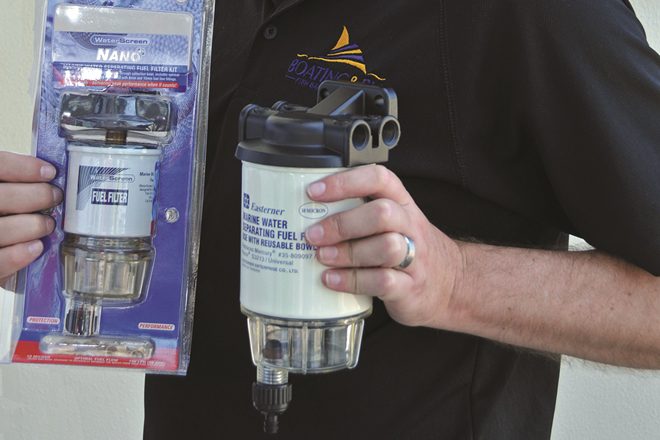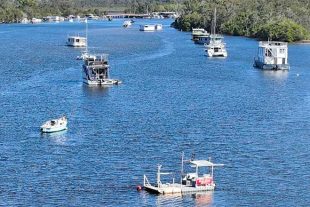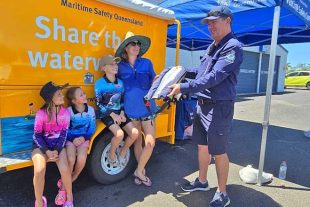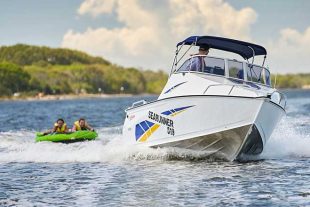LEADING marine products retailer Boating and RV, which has stores at Capalaba, Slacks Creek, Tingalpa and Townsville, has joined with Bush ‘n Beach to bring you a regular column with some serious information and news about general boating products. Here, Director Aaron Hunt looks at how to reduce the likelihood of a fuel contamination problem stopping you at sea.
Electrical, mechanical or fuel – if something is going to stop your powerboat, it probably will be a fault attributed to one of those three main areas of engine operations. And perhaps the most common missing link – fuel – is also the easiest to prevent, or at least lessen the likelihood of a problem developing.
So, assuming you’re buying your fuel from a reputable servo where the holding tanks are in good condition, the dispensing equipment likewise is in great shape and the outlet’s turnover of fuel is very regular and constant, you then become the last link in the fuel chain.
How long you leave your fuel in your boat (yes, it does deteriorate over time); where you keep your boat in terms of its exposure to condensation forming; the condition of your fuel lines and the quality and serviceability of your fuel filters, are critical factors in that last link. In Queensland where we have dust and rain storms, heavy rain, high humidity, bush and sugarcane fires, rough seas, cyclonic winds, as well as the usual culprits of fuel line clips breaking, ‘helpful’ friends insisting they fill the boat and then not tightening the fuel cap properly, there are numerous ways water and debris particles can find their way into your fuel tank and lines.
While your outboard will have its own fuel filter (there can be a number of them by the time you count those for fuel induction as well as a vapor separator tank and injectors), our focus here is to prevent contaminated fuel getting to your engine in the first place.
Primarily, that will be contamination by the ingress of water and/or debris particles. And the way to prevent them continuing down the fuel lines to the engine is to intercept them using a fuel water separator which incorporates a filter. In general terms, the budget versions are generally less than $50 rising to around $80 for the ones with inspection bowls; replacement filter elements typically are around $20.
Separators are cylindrical in shape and screw into a firmly-mounted top piece. In simple terms, fuel enters the separator via a hose, swirls through the filter and then exits out another hose to the engine. It should be an essential link in the system. The porosity of the filter is measured in microns. A micron is one thousandth of a millimetre. To put that in perspective, a human hair has a diameter of perhaps 50 to 75 microns.
A fuel filter might typically have a specification of around 10 microns – that means it is small enough to trap debris while still allowing fuel to pass through it. Any water will settle in the bottom of the filter reservoir. Some designs have a glass inspection reservoir at the bottom and a tap which lets you drain off that water. The water ends up in the bottom of the separator because it is less dense then water – it therefore floats above water.
Other separators are throw-away styles meaning that if you take them off to drain the water, you then need to dispose of them and any remaining fuel appropriately. It’s often a good idea to tip the fuel contents from the filter into a jar so you can inspect how much water and/oil debris has been collected. Don’t just tip it down the drain. Contact your municipal council – some such as Brisbane have free drop-off days where you can disposal of the fuel at no charge.
Depending on your usage and boat storage, your fuel water separator typically would be changed every six or 12 months. Some filters are for single outboard use, others have two inlets. Similarly, it is common to see twin separators fitted in twin engine installations – one for each engine.
Others are designed specially for smaller vessels up to four metres in length which will have small outboards. If fitting a water separator and filter, don’t screw it to your transom. The less holes created in a transom, the better. Look for a section where it can be mounted with easy access – often somewhere under an outboard well or to the side of the bilge.
 Bush ‘n Beach Fishing Magazine Location reports & tips for fishing, boating, camping, kayaking, 4WDing in Queensland and Northern NSW
Bush ‘n Beach Fishing Magazine Location reports & tips for fishing, boating, camping, kayaking, 4WDing in Queensland and Northern NSW









